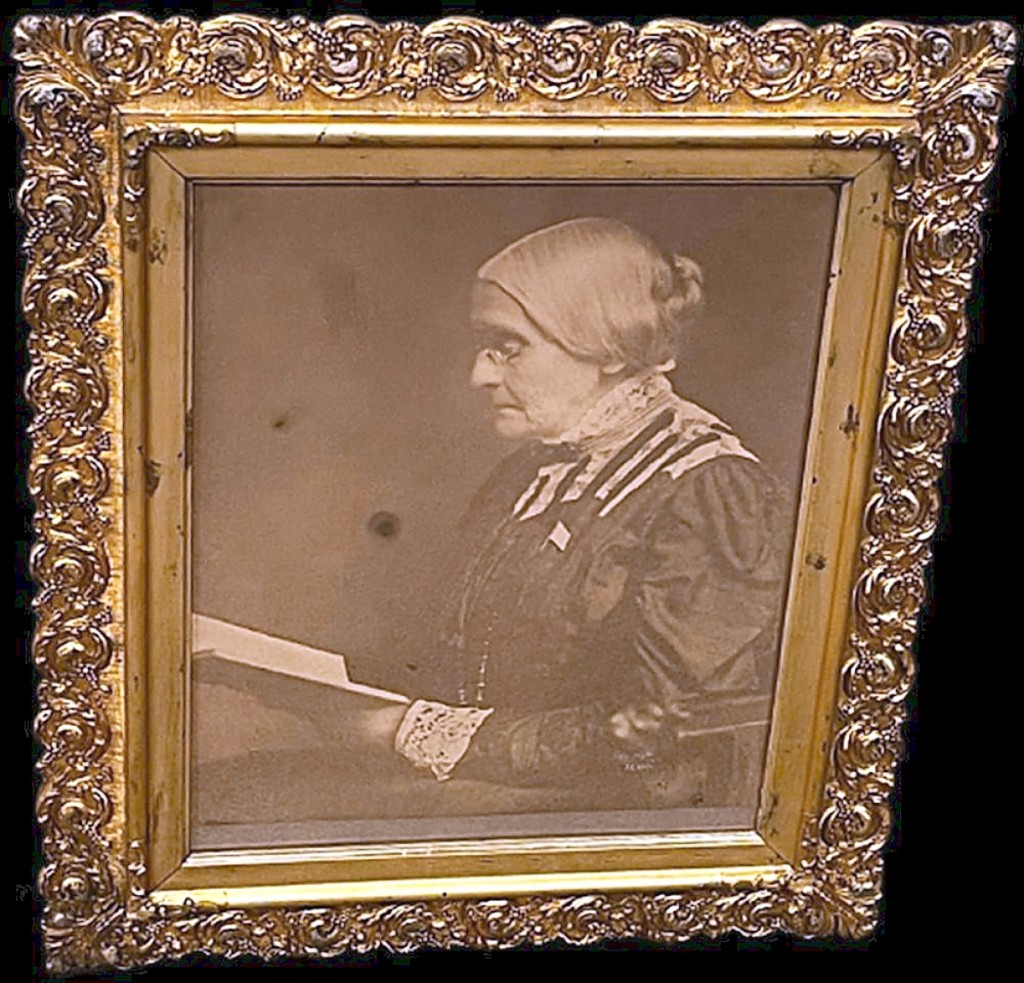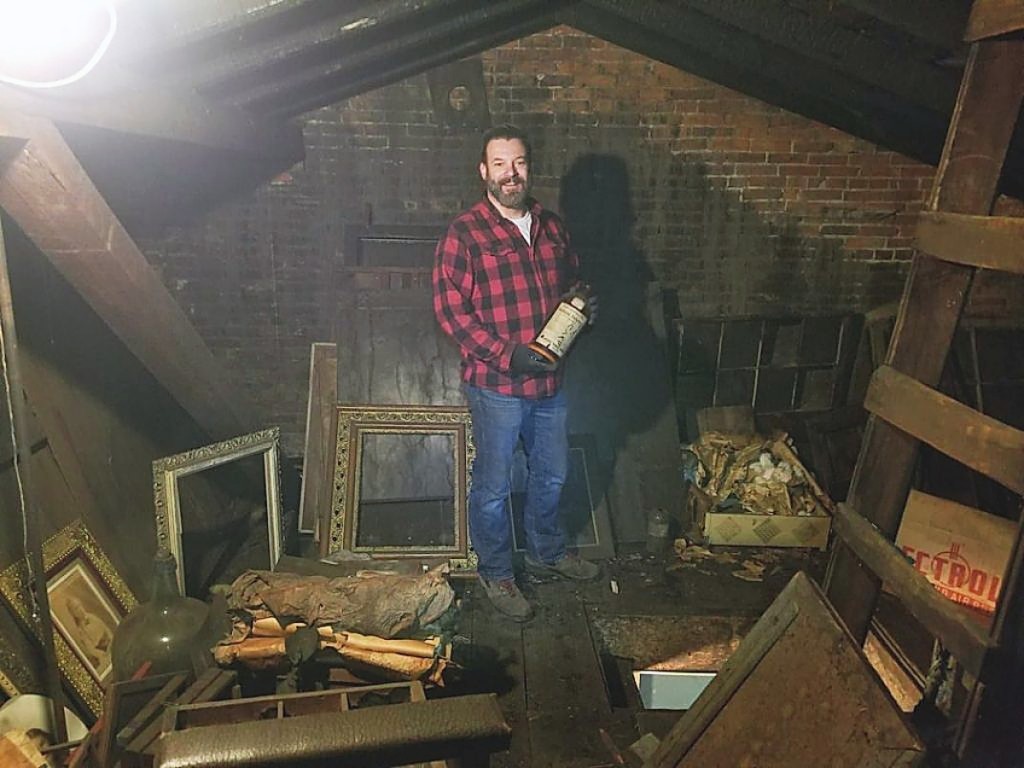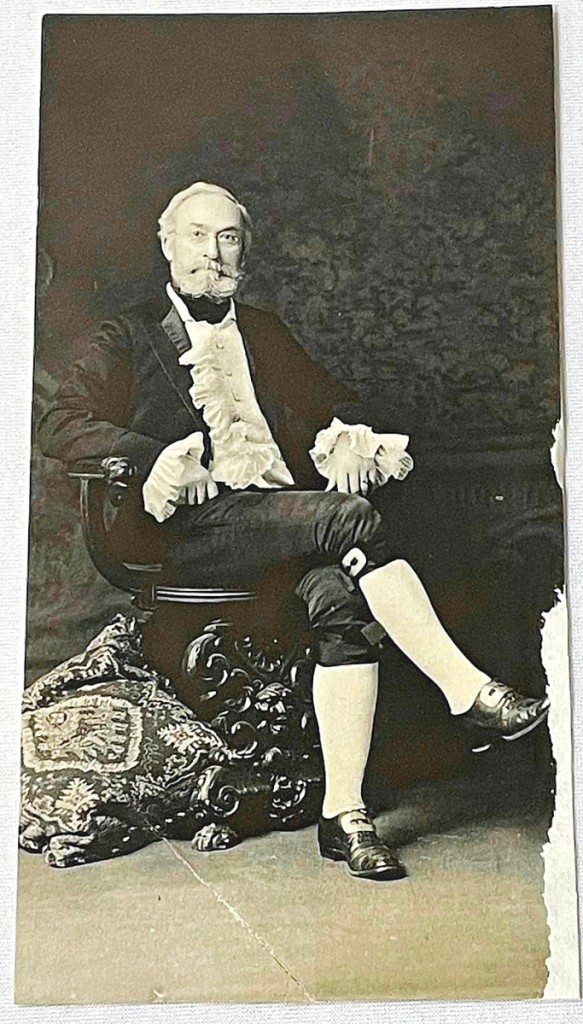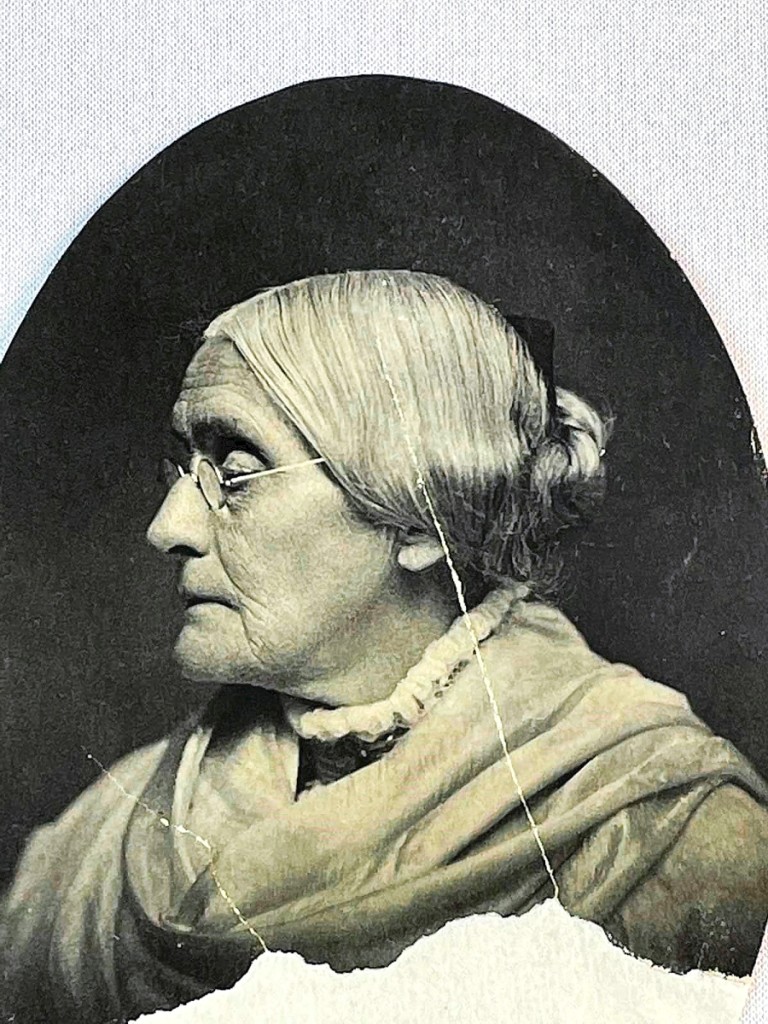
The top lot of the sale at $35,990 was a silver bromide photographic print of Susan B. Anthony in original frame. Kirvan said that it hung on the wall in Hale’s studio. Hale took this image of Anthony in November 1905, four months before she would pass away. The Susan B. Anthony Memorial Association nearly immediately recognized the image’s quality and adopted the it as its official portrait in 1906.
Review by Greg Smith, Photos Courtesy One Source Auctions
CANANDAIGUA, N.Y. – News broke in February of 2021 that a lawyer in Geneva, N.Y., had found the Nineteenth Century time capsule photography studio of JE Hale in a sealed attic room in his newly purchased three-story building.
David Whitcomb, 43, told CNN, “The first thing I saw was a whole bunch of picture frames stacked together and these frames are gorgeous. They’re the turn-of-the-century, they’re gold, gilded and they shone really bright and I was like ‘Oh my God.’ I lowered myself and said ‘I think we just found the Goonies treasure.”
Whitcomb reportedly checked with the prior owners of the building, who said they were unaware of its existence.
James Ellery Hale lived in Geneva from 1892 to 1920 and his studio was moved into Whitcomb’s building sometime after 1900. In addition to his commercial portrait photography, Hale became known in the suffrage community and took photos of suffragists Susan B. Anthony and Elizabeth Smith Miller, among others.
Hale operated a skylight studio in the attic where he primarily used the roof skylight as his light source, as opposed to electric lighting or flash. His use of platinotypes was unusual, One Source Auctions auctioneer Aaron Kirvan said, as other photographers of the period preferred to use tin or other more economical mediums.
“David walked into my antiques shop – we have the auction facility on the second floor and our shop is on the first,” said Kirvan. “That was back in December 2020. He said he found a Susan B. Anthony photograph, wondered if we’d like to sell it, and then he said there was a lot more and I’d have to come look. I got up there and I instantly told him not to throw anything out. We treated it like a crime scene.”

David Whitcomb stands in the attic after he discovered JE Hale’s skylight photography studio. —Photo David Whitcomb
Over the next ten months, Kirvan and others donned their detective hats as they worked to pair names with images and tried to unlock the mystery of why this studio remained sealed in an attic like King Tut’s tomb.
“When Hale sold his practice in 1920, he went to Michigan and died four years later,” Kirvan said. “The attic was his studio, that’s where the skylight was. The person that took it over, we assume he didn’t use the skylight studio. He must have just left it there and closed it up.”
The studio offered up 350 lots in One Source Auctions’ September 18 sale. Split between them were well over 1,000 objects between photographs, frames, camera equipment and props.
The whole auction would gross a little over $70,000, Kirvan said.
Five of the sale’s top seven lots were images of Susan B. Anthony, led far and away by a silver bromide photographic print that sold for $35,990. The image was taken by Hale in November 1905, just four months before Anthony passed away. In 1906, the Susan B. Anthony Memorial Association adopted the image as its official portrait. Kirvan said this image was hung on the wall in the studio, likely part of the photographer’s personal collection.
It could have gone higher had a second party expressed more interest.
“The bidder on the phone who bought it, I don’t think he would have stopped until $100,000,” Kirvan said.
This photograph was offered alongside another silver bromide photographic print of the same image taken from the negative. The two effectively doubled the known population of this pose by Anthony, another resides in the Library of Congress. The second example sold for $7,670.
Coming in at $3,304 was a unique side profile of Anthony on a platinotype photographic print. It is the only known example of this image and a buyer in California was the successful bidder.

James Ellery Hale sits in a chair in this self-portrait platinotype photographic print. Hale’s skylight studio, which he evidently sold in 1904, was found intact in an attic in Geneva, N.Y., by David Whitcomb. This print sold for $77.
Kirvan wrote of the process, “[The platinum/palladium process] was popular for practical reasons as platinum is very stable so prints do not deteriorate over time. It is a very permanent image, and was highly valued for this reason. The main attraction of platinotype is, however, aesthetic. The process produces wonderfully rich grey-tones and a matte finish due to the print being laid directly on paper without the need for an emulsion. Those characteristics are demonstrated in this wonderful photograph.”
Selling for $2,124 was another only-one-known side profile of Anthony that was unique in that she is pictured without glasses. Anthony reportedly had a lazy eye and liked to take photographs from side profiles for this reason, but she was typically never photographed without her glasses.
The image was torn in two and had restoration to join the halves. It was purchased by Kelly Vincent-Brunacini, a board member of the Susan B. Anthony Birthplace Museum. Brunacini told the Berkshire Eagle that she believes it was taken in celebration of Anthony’s 80th birthday.
It only fielded one bid, but the $1,770 price for the incomplete glass negative of the official Susan B. Anthony portrait was a steal, Kirvan thought.
“It was so dark up there, but David happened to see some things shining on the ground. He put his flashlight on them and saw the negative glass with the lapel with the American flag. We don’t know what happened to the rest of it but we were up there with paint brushes trying to find the rest. It was such a unique piece. It’s one of a kind.”
Experts did their best to reassemble the pieces and from what is seen it is clearly the official portrait, though it lacks a face and much of the top right quadrant. It sold to the same California buyer who bought the unframed official portrait.
Hale’s studio props were highly sought-after as these ephemeral objects, typically only visible in the backs of daguerreotypes and other antique photographs, were almost universally lost to time. Selling for $3,186 was a hand painted landscape backdrop from the Ross L. Fitch Studio in Chicago. Behind at $2,242 was a painted interior scene backdrop depicting an open window and a drawn curtain to the side.
Other objects from Hale’s studio included his street corner display box, $478; a print block for the photographer’s advertisement which reads “Hale The Leading Photographer, Geneva,” $590; his ultra large format camera that was likely used for the Anthony photographs, $560; a Rochester Optical Co., field view ideal variation 2 camera, $443; and a circa 1900 Chas H Nichols “Portrait” flash lamp that brought $189.

This is believed to be the only example of this Susan B. Anthony image known. The platinotype side profile portrait sold for $3,398.
There were plenty of props in the sale that were found in the background of the some of the images on offer. A platinotype print of a well-dressed boy in a chair, his foot resting on an a pouf, would sell modestly at $24, while the actual pouf brought $41.
Hale took images of other suffragettes. Elizabeth “Libby” Smith Miller, a Geneva activist whose childhood home was a stop on the Underground Railroad, was reportedly one of the first women to adopt the wear of bloomers after Amelia Bloomer popularized the fashion in The Lily. Her five images in the sale were led by a platinotype that brought $472. An image of Anne Fitzhugh Miller, who delivered a speech at the 1894 New York State Constitutional Convention, sold for $384.
Before the sale occurred and amid the media blitz on the discovery, Kirvan was asked by CNN what he thought the trove would bring. He answered with a modest $50,000.
“I thought there would be more interest on some stuff, some people were more in love with the story than the items,” he said.
Buyers were mostly domestic, but international bidders from Spain and England were also successful.
Kirvan will be offering some of the passed lots in an October 8 sale.
All prices reported include the buyer’s premium. For information, www.onesourceauctions.com or 585-261-8506.




















